As Letnica’s Croatian community fades, its legacy endures. The stories of Petra, Kristo, Pavlina and Maria serve as testaments to resilience, identity, and a deep connection to the land in this rural corner of southern Kosovo.
From a distance, Letnica exudes a bucolic charm. Nestled among the mountains, its imposing church chimes across the valley. However, as you venture along the village’s paths, winding through history, you encounter stone houses that stand as remnants to Letnica’s dwindling Croatian community which once stood at 5,000 people. Now just a handful remain.
Letnica is a small village situated in the deep south-east, isolated along a dead-end road which comes to a halt not far from the mountain range which separates Kosovo and North Macedonia.
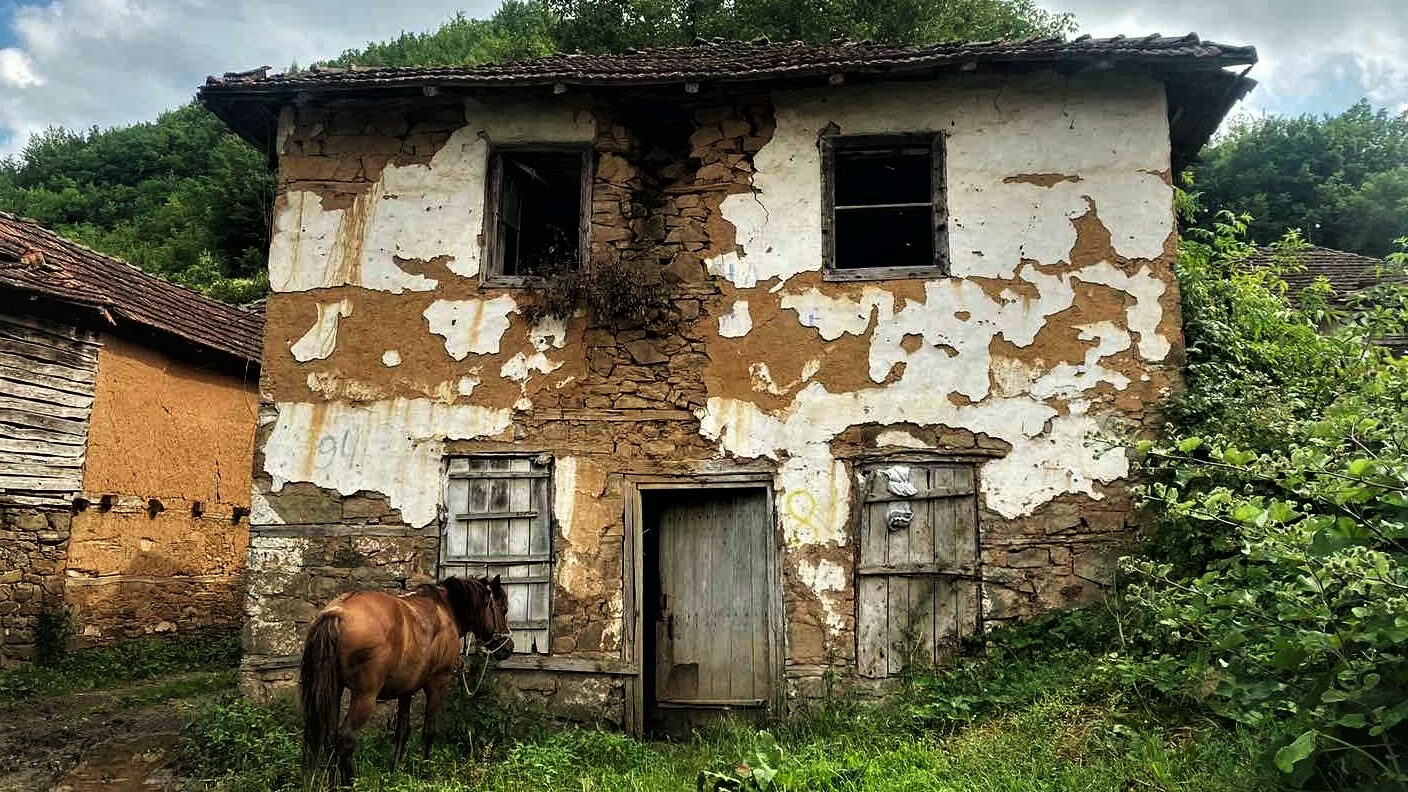
Small village Letnica, Vitia. Photo: Antigonë Isufi/Prishtina Insight
Although the years have etched wrinkles onto Petra Jakovic’s face, her pride in her Croatian heritage remains unwavering. Donning a scarf adorned with Croatia’s red and white checkerboard pattern, Petra, now in her nineties, embodies the legacy of her ancestors. She still crosses the village’s streets, despite her ageing body and weary feet, a testament to her endurance.
Petra still embraces traditional Croatian dress.
“I’ve spent 85 years here in Letnica,” She said. “This is where I was born and baptised and where I got married – everything happened here. We used to have a life surrounded by trees, fields and pastures,” Petra shared as we made our way to her house.
Around Letnica, 15 elderly Croats remain from a once thriving community, now all living in separate houses. When they die, the lights in their century-old homes may be turned off forever as their children have moved to Croatia years ago and have no plans to return.
“No, I want to stay here,” insisted the 85-year-old woman, “I was born here, I’ve lived here, I’ve left my sweat here. I want to die here…The air is clean, everything is clean. I’ve grown accustomed to here, in this life in Kosovo.”
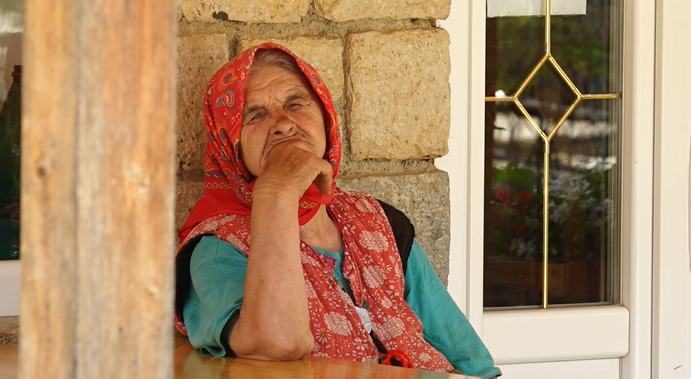
Old Croat of Letnica, Petra Jakovic. Photo: Denis Sllovinja/BIRN
The ethnic Croats of this rural area of Kosovo remain few in number, mingling among the Kosovo Albanians inhabitants, with whom they say they get along well. Still, they have preserved their language, clothing, religious traits and way of life.
Once a year the ageing Croat community sees a burst of youthful energy when Catholic pilgrims throng the streets. They gather on August 15 for the celebration of the Assumption of the Virgin Mary.
Petra recalls a time when around 360 houses in the village were inhabited by Croats. Now people have to search hard to find them. The village is nonetheless still known as a “Croat village” even though it now has more ethnic Albanian residents.
“Back then, there were no Albanians here,” said Petra “The four villages were Croat. We didn’t have a school, nothing. We’ve known this language [Croatian] – we’ve spoken this language in those four villages.”
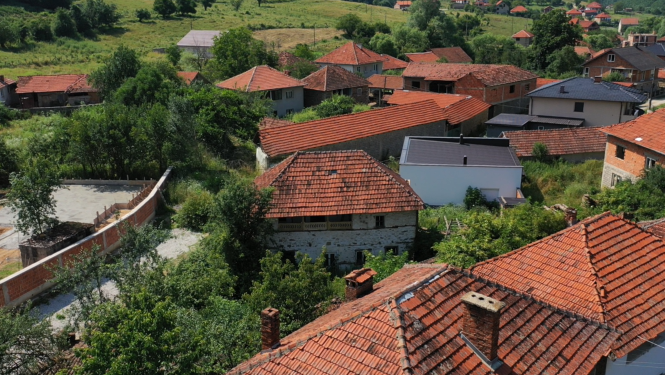
Small village Letnica, Vitia. Photo: Antigonë Isufi/Prishtina Insight
The Croatian community also resides in the villages of Shashar, Vërnavokollë and Vërnez, making up about 0.05 per cent of Kosovo’s population. Their presence speaks of a heritage that spans centuries, embodying a profound connection to the land.
Shin Gjoni, the ethnic Albanian mayor of Letnica, said he has faced no problems since he came to live in this small village many years ago. He vividly remembers the time when he, along with his family, moved to Letnica. Back then, Croats were the majority, and Albanians were the minority. Things have changed since then.
“We were a minority here, just three or four houses in total. But they’ve never treated us differently, even after the war. We’ve had good harmony with them,” Gjoni said.
War’s footprints separated them
Now, none of Letnica’s Croat works anymore because they are retired. During the three days we visited the village, those left told us that they do not expect their children will ever return.
Jozic Krist, 77, is among the few remaining Croatian men in the village. He vividly remembers both wars of the 90s, in Croatia and Kosovo, and the fear he felt in those difficult times for his two homelands.
“At that time, I worked at the Ratko Mitrovic company [in Belgrade]. But when I returned from Belgrade, I didn’t go back to work because I feared for my life. I worked hard and tried my best, but earned little money. Now, I can’t work anywhere. I’m old, 77 years old, I’m no longer fit for work,” he said.
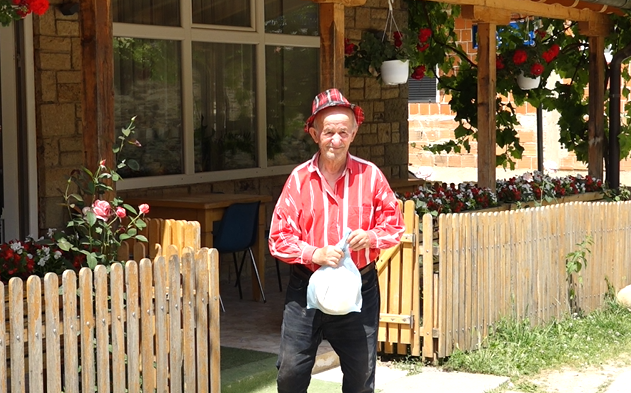
Ethnic Croat of Letnica, Jozic Krist. Photo: Denis Sllovinja/BIRN
Founded in 1948 as a military construction company Ratko Mitrovic factory, it rapidly grew into a top-tier corporation for residential, industrial, and military projects in the former Yugoslav construction scene.
Croats settled in Kosovo from the 14th century. They originated from Dubrovnik and Bosnia and Herzegovina and were merchants and miners, according to the Central State Office for Croats Abroad.
“We had wars in Croatia, but thank God we survived. There hasn’t been any issue. No one has harmed me, and I have not harmed anyone. That’s how we have lived,” he added.
Most of the Croats from the municipality of Vitia, which includes Letnica, left Kosovo during the 1990s, when the dissolution of Yugoslavia started.
Shin Gjoni said that Letnica once had around 5,000 Croatian residents, but when the war started in Croatia, out of fear for persecution from the Serbian police in Kosovo, many of them left Kosovar villages around 1992. Some others went back to Croatia to join the war and fight. Others left the Kosovar villages during and after the war in Kosovo.
Only a few elderly people remained after the war, around 56 in total, but most have since died.
An OSCE report highlighted that out of the 4,331 Croats registered in Vitia during the population census of 1994, only around 40 remained in 2011.
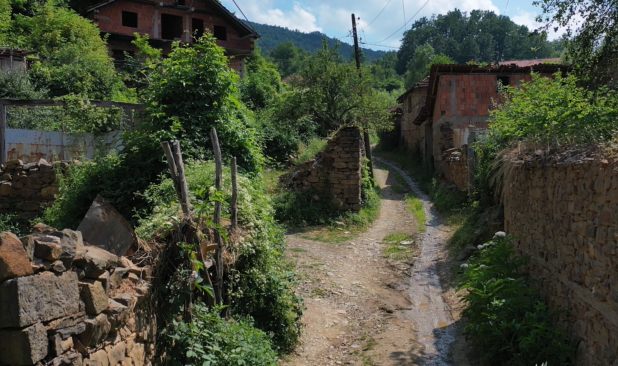
Small village Letnica, Vitia. Photo: Denis Sllovinja/BIRN
Jozic emphasises that Kosovo is his homeland, as his great-grandparents were born in the land of Letnica. He has a deep attachment to the land of his ancestors, but his children did not want to continue their lives here, so they went to live in Croatia.
Now the few Croats who remain in this village fear they will be completely forgotten.
Jozic will be the last member of his family to spend his old age in this village if his descendants do not return.
“I do not have a valid Kosovo passport. I need to get one, and it’s quite expensive. I can’t get a passport just to go and visit, so I’ve been left here alone with God,” he added.
‘Dubrovnik’ brings them together
We met Jozic Kristo on the way to the Dubrovnik restaurant in the village. As soon as his white and red cap caught our eye, we knew that Kristo was a Croat. He collects a meal at the restaurant every morning, and then he takes care of his small garden, although he can no longer raise livestock as before.
For Jozic, Dubrovnik brings everyone together, as he eats a meal there once a day alongside his fellow elderly villagers.
“It’s good, we can’t complain. Mile prepares the food well, he is a good man,” Jozic said about one of the restaurant owners.
At the edge of a road that leads to a family who own horses, near the old walls, Josefina Dokic has been running Dubrovnik for eight years, attracting tourists to the village. On the ground floor of her house, Josefina, her husband Mile, her sister, and daughter prepare food all day.
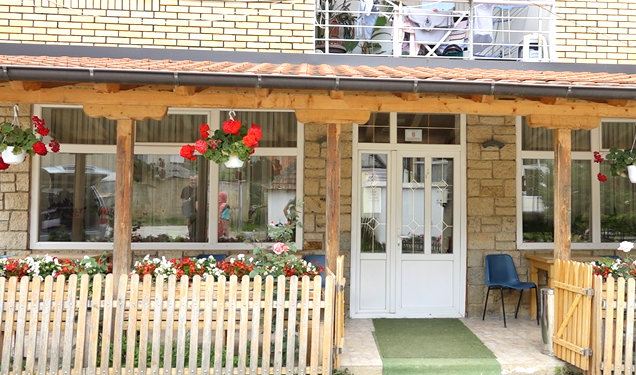
Dubrovniku restaurant in Letnica, Vitia. Photo: Denis Sllovinja/BIRN
Josefina told us that they named it Dubrovnik because that is where the Croats first came to Kosovo from. They have been preparing food for over 30 years. They have no intention of leaving.
With small steps, about seven minutes’ walk from her house each morning, with a stick in hand, 85-year-old woman Petra fetches her meal at the Dubrovnik restaurant to take home.
The small Dubrovnik restaurant is nestled among flowers. Food is served twice a day to the elderly Croatian residents without charge, and the venue becomes a meeting point. Along the village roads, near a small shop, in the Church of Lady of Letnica, and at the restaurant, Croats and Albanians spent time together.
In 1920, Mother Teresa undertook a pilgrimage to this village. Born Agnes Gonxha Bojaxhiu in Skopje, North Macedonia, to a family of Albanian descent, Mother Teresa left home at eighteen to join the Sisters of Loreto, an Irish community of nuns with missions in India. In 1979, she received the Nobel Peace Prize for her humanitarian efforts, and the next year, the Indian government honoured her with the Bharat Ratna, the nation’s highest civilian award.
Leaving something behind
Pavlina Lencic, 77, cannot go to get her meal at Dubrovnik because she is unwell and stays confined within her garden, where she takes care of her chickens and dog. The church’s nuns bring food to her house.
“It would be a sin not to take care of them,” she said about the animals she keeps in a yard enclosed by doors that resemble grilles. “I need to feed them, give them water, everything.”
Now she lives solely on a 100 euro state pension. Exhausted by old age, she does not have the strength to go outside and talk with us. When Pavlina had the energy, she and her family worked the land and kept livestock.
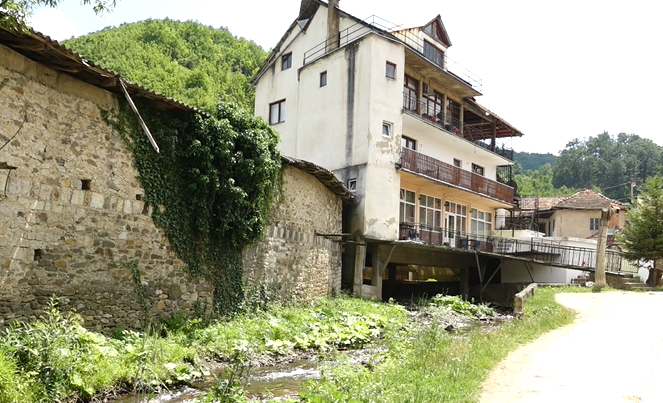
Small village Letnica, Vitia. Photo: Denis Sllovinja/BIRN
“No, I cannot work. I’m in pain, I can’t do it, I have back pain. But I had everything when my son was alive – cows, goats, sheep, over 100 in total. He took care of them. Now I don’t have any of that anymore, nothing. It’s like living in a wasteland now,” Pavlina said.
Pavlina understands some Albanian, but she speaks mostly in Croatian.
“I understand some words in Albanian and I wish to learn, but I cannot read or write,” she said.
“I was born here, everything here, the air is clean, everything is beautiful, the water is clean. Do you see how clean the air is?” she concluded, describing her love for her village.
Letnica is home to a mixed population. Apart from Croats, there are also ethnic Albanian Catholics and Muslims and a Kosovo Serb living here.
“They keep their own language, and we do not mind that they do not learn Albanian because they are elderly and could not learn the language.,” Shin Gjoni said. “We don’t mind speaking in their Croatian language so that we can communicate more easily and avoid making them feel threatened due to language.”
The 85-year-old Pavlina has 12 children, but only one son lives nearby; the others have gone to live in Croatia.
“My son stays with me because I’m alone. I do not plan to go to Croatia. I might go visit them, see how they are doing, but I do not want to live there, God forbid,” she said, disheartened.
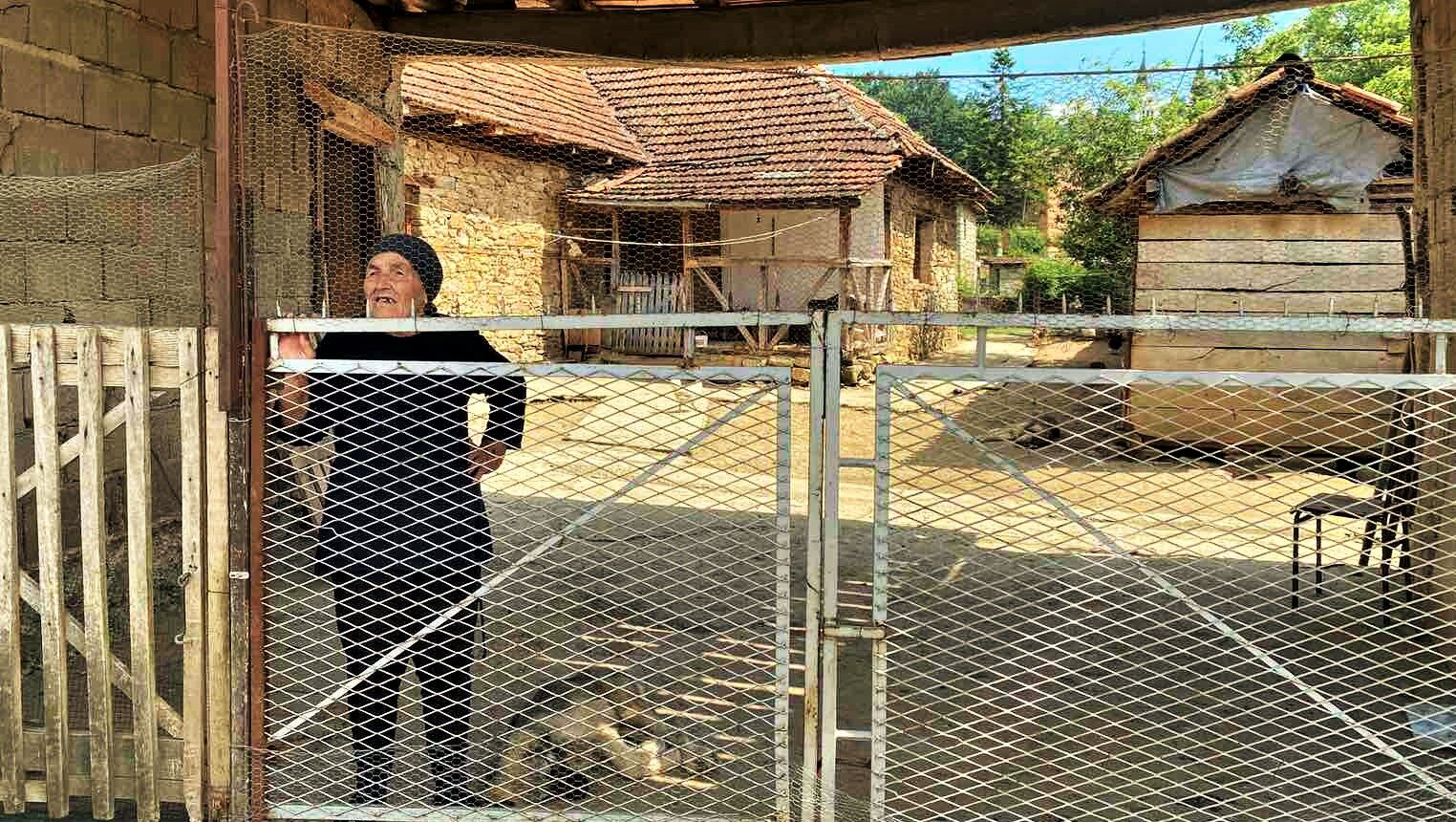
Old Croat of Letnica, Pavlina Lencic. Photo: Antigonë Isufi/Prishtina Insight
Pavlina does not know how her ancestors came to live in Kosovo, but she firmly believes she will never leave Letnica until her last breath.
“Let them (Croatian community) decide where they want to go and how. As for me, I want to live here,” she added.
Despite some of the Croats expressing concerns about their challenging financial conditions, their greatest fear is loneliness. Every morning, they emerge from their four walls alone. They do not want to pass away without anyone by their side.
Stone houses for elderly people
After collecting her meal, Petra Jakovic escorted us to her home to show us the life of an old Croatian woman in this southeastern village.
Her home looked as old as Petra herself and the Christian pendant she wears around her neck. Alone in this two-story house, dressed in old, tattered clothes and a worn-out white dress, Petra keeps small remnants of her heritage in a sparse room.
In a small garden where she plants tomatoes, peppers, and aubergine, Jakovic tries to preserve a bit of the land-cultivation tradition.
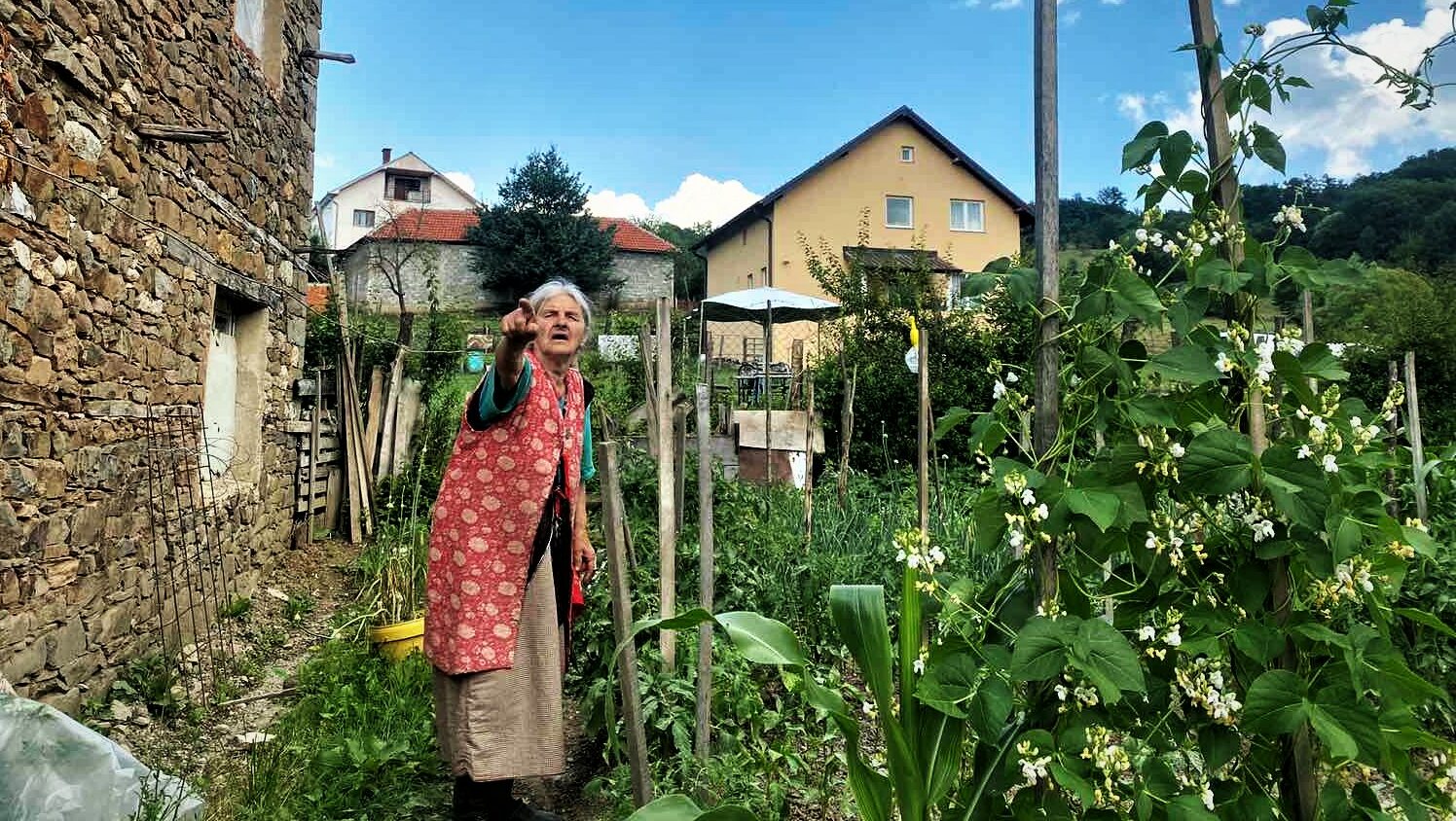
Old Croat of Letnica, Petra Jakovic. Photo: Antigonë Isufi/Prishtina Insight
“We worked hard, we had a water mill, our trees, our garden. My mother and father taught me. We worked day and night. I was never hungry under my father’s care. I had everything, and now I have nothing,” Petra said as she worked in her garden behind the house.
Letnica is filled with untouched nature, but there are also many abandoned houses. The houses are usually made of stone, and the old wooden gates are wide and long enough to allow livestock to pass.
For the Albanian residents, these stone houses are a characteristic feature of Croatian-style homes.
“The houses are older than the people, and these owners don’t invest here,” Shin Gjoni said. “They [Croats] don’t invest because they don’t have much money. Just as they had them, they still have them.”
Further up the village in another old house, Petra’s sister lives, 90-year-old Maria Peric.

Old Croat of Letnica, Maria Peric. Photo: Antigonë Isufi/Prishtina Insight
Most of her time, she sits on a public bench close to the church where liturgies are held in both Albanian and Croatian. Maria wishes someone would occasionally bring her some Croatian food.
“It’s difficult to live alone. Nowhere is good when you live like a wolf. Everybody needs someone to take care, to protect you. When you’re alone, you can’t do anything. When you can’t, you stay hungry.”
Maria’s husband passed away nine years ago. “Now I do not have any protection anymore. He helped people; now nobody notices me.”
She has a room where she keeps old Croatian clothes, but due to fear of thieves, she does not show them to anyone. However, even though she is not content with her living situation, Maria is happy to spend her old age in her homeland.
“How can I not be happy? I live in my place, where I was born, where I got married, where I grew up, where I got old. I achieved everything here,” Maria concluded.





